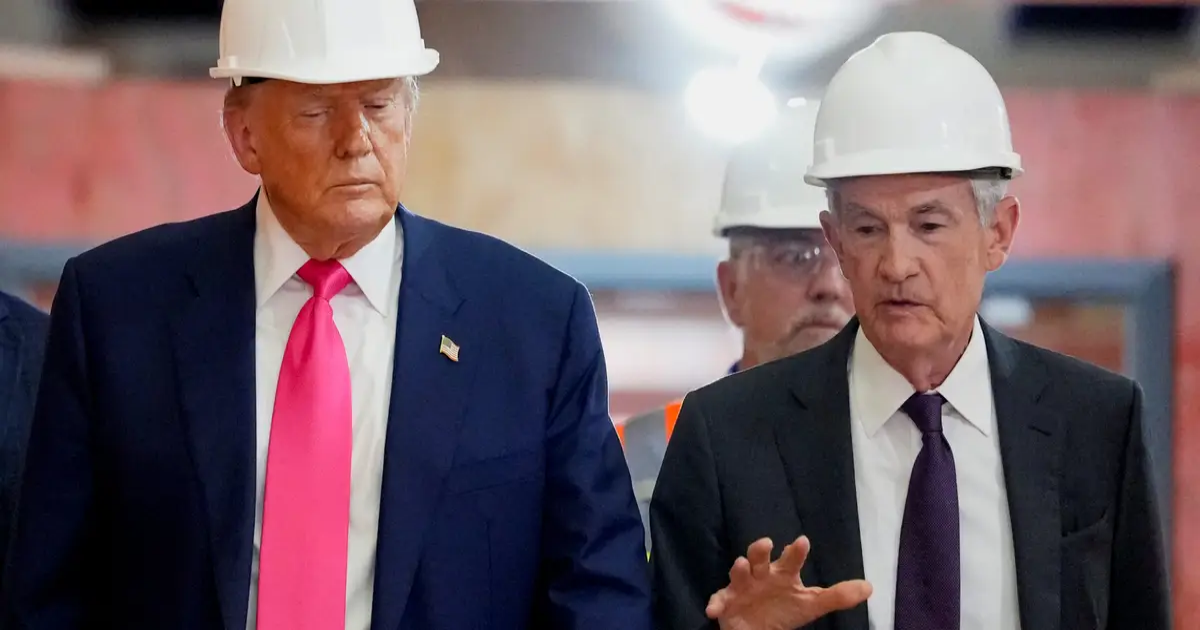President Donald Trump and Federal Reserve Chair Jerome Powell can’t seem to get on the same page about numbers.
That goes for not only the interest rates Trump would like to see lowered, but also the cost of renovating the Federal Reserve building and whether there is inflation in the country.
On Thursday, Trump became the first president in nearly two decades to visit the Federal Reserve after George W. Bush in 2006. He said the Federal Reserve renovation project now costs “$3.1 billion,” up from the current budget of $2.5 billion.
“I’m not aware of that,” said Powell while shaking his head.
The cost of the major renovation project on the Federal Reserve building in Washington, DC, became a talking point for the Trump administration when the original $1.9 billion price tag in 2017 ballooned to $2.5 billion by 2023.
The building hasn’t undergone any major renovation since its construction in the 1930s. The renovation includes removing asbestos and updating electrical lines in the structure for safety reasons.
A 2023 Fed budget document attributed the cost to “significant increases in raw materials… higher labor costs, and changes in construction schedule expectations which lengthen use of leased space.”
Later in the visit, Trump went on to call the opening up of the basement and the plywood protection boards in the halls a “very luxurious situation” when asked if he thinks Powell mismanaged the renovation.
Plywood boards line the hallways to protect the exist historical structure from damage during construction. Kent Nishimura/REUTERS
Though Trump said he would not be firing the Fed chair, he did not conceal his demand for lower interest rates.
“Our country is the hottest in the world right now, but the one thing is that people are pretty much unable to buy housing because the interest rates are too high,” said Trump. “We have no inflation. We have a lot of cash coming in.”
Related stories
“I think he will do the right thing,” Trump added of Powell.
According to figures from the Bureau of Labor Statistics, inflation picked up in June and rose to an annual rate of 2.7%, which is above the Federal Reserve’s goal of 2% inflation.
Since December 2024, the Fed has maintained its benchmark rate in a range of 4.25% to 4.5% and refused to budge, despite repeated criticism from Trump.
In his semiannual testimony in Congress in June, Powell cited uncertainty over the impact of Trump’s tariffs as a major factor in the central bank’s decision not to lower rates. He said that the inflationary effects of the tariffs “could be short-lived” or “could instead be more persistent.”
